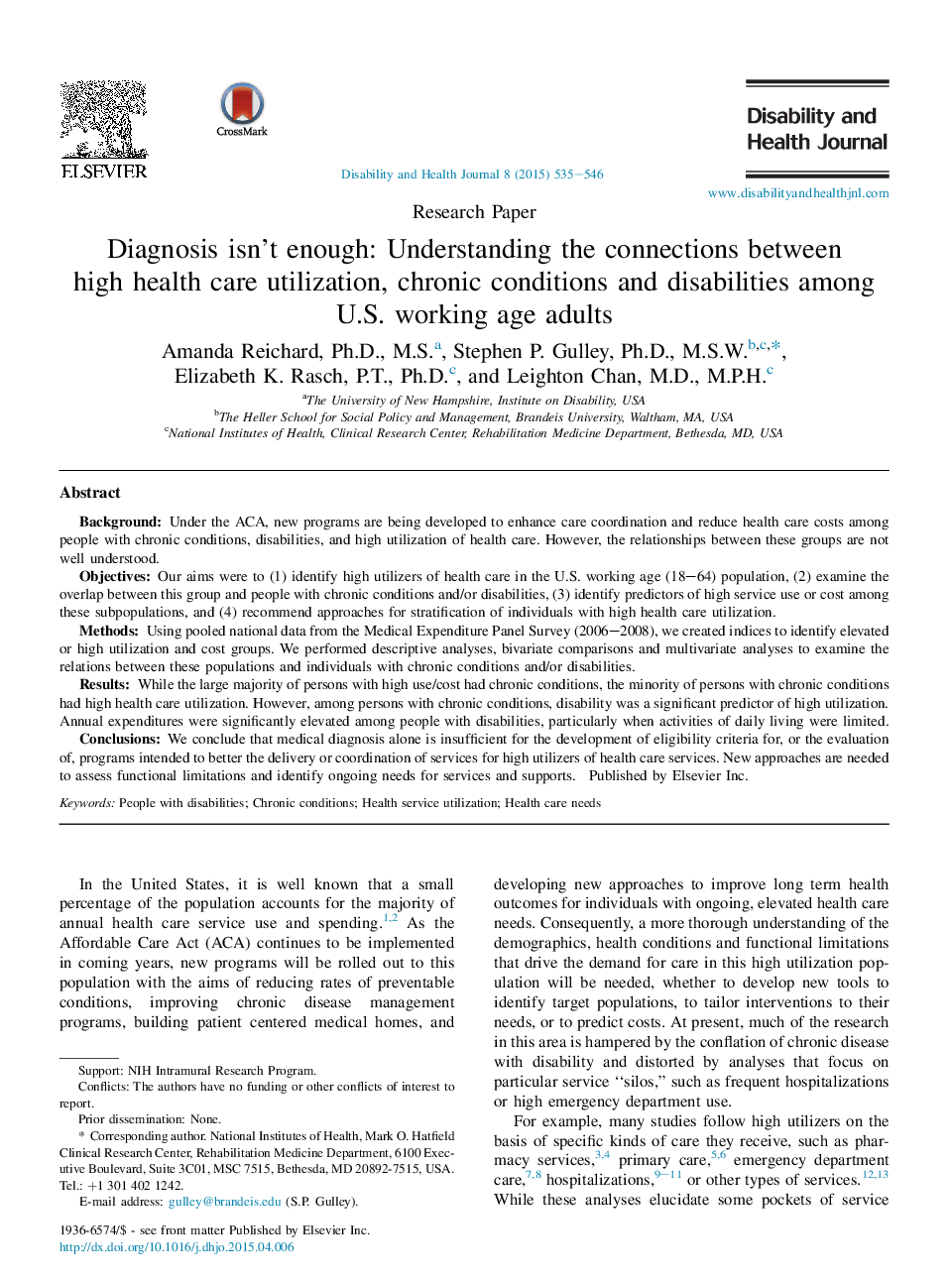| Article ID | Journal | Published Year | Pages | File Type |
|---|---|---|---|---|
| 6238826 | Disability and Health Journal | 2015 | 12 Pages |
BackgroundUnder the ACA, new programs are being developed to enhance care coordination and reduce health care costs among people with chronic conditions, disabilities, and high utilization of health care. However, the relationships between these groups are not well understood.ObjectivesOur aims were to (1) identify high utilizers of health care in the U.S. working age (18-64) population, (2) examine the overlap between this group and people with chronic conditions and/or disabilities, (3) identify predictors of high service use or cost among these subpopulations, and (4) recommend approaches for stratification of individuals with high health care utilization.MethodsUsing pooled national data from the Medical Expenditure Panel Survey (2006-2008), we created indices to identify elevated or high utilization and cost groups. We performed descriptive analyses, bivariate comparisons and multivariate analyses to examine the relations between these populations and individuals with chronic conditions and/or disabilities.ResultsWhile the large majority of persons with high use/cost had chronic conditions, the minority of persons with chronic conditions had high health care utilization. However, among persons with chronic conditions, disability was a significant predictor of high utilization. Annual expenditures were significantly elevated among people with disabilities, particularly when activities of daily living were limited.ConclusionsWe conclude that medical diagnosis alone is insufficient for the development of eligibility criteria for, or the evaluation of, programs intended to better the delivery or coordination of services for high utilizers of health care services. New approaches are needed to assess functional limitations and identify ongoing needs for services and supports.
